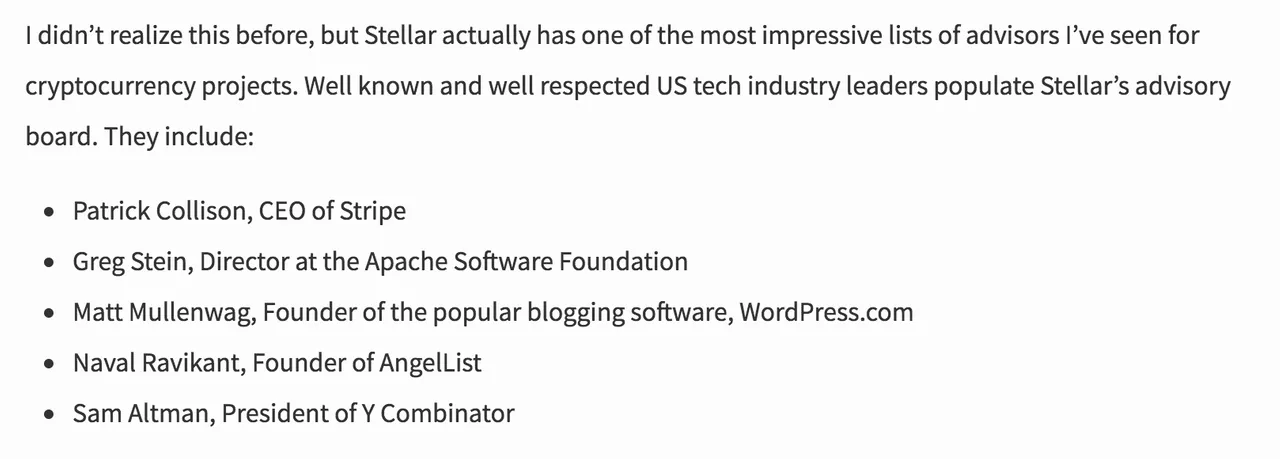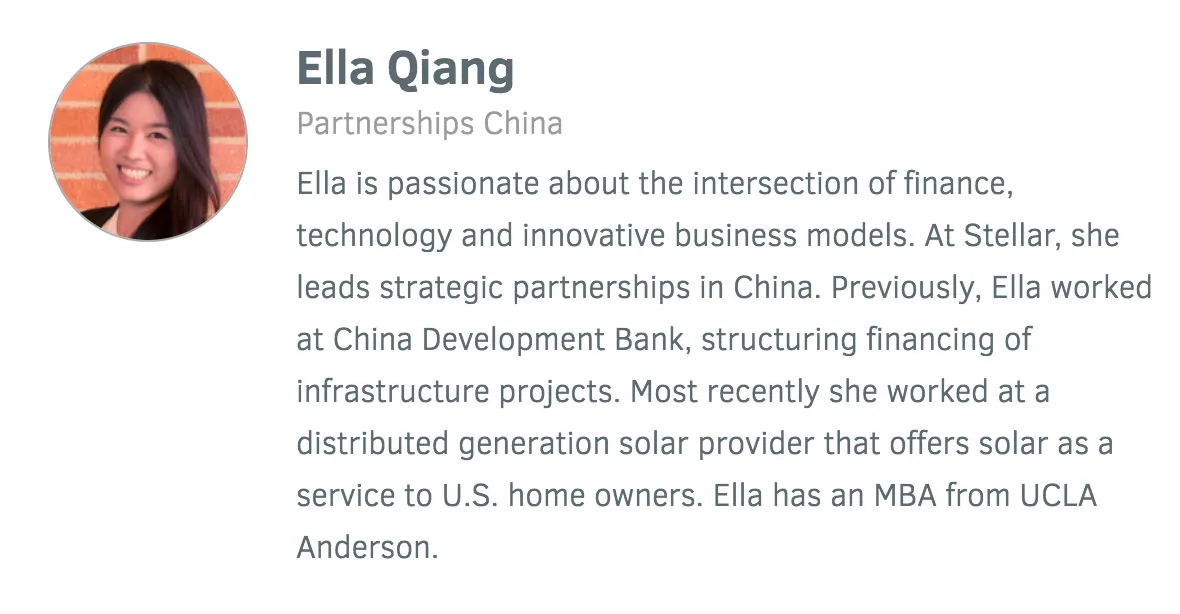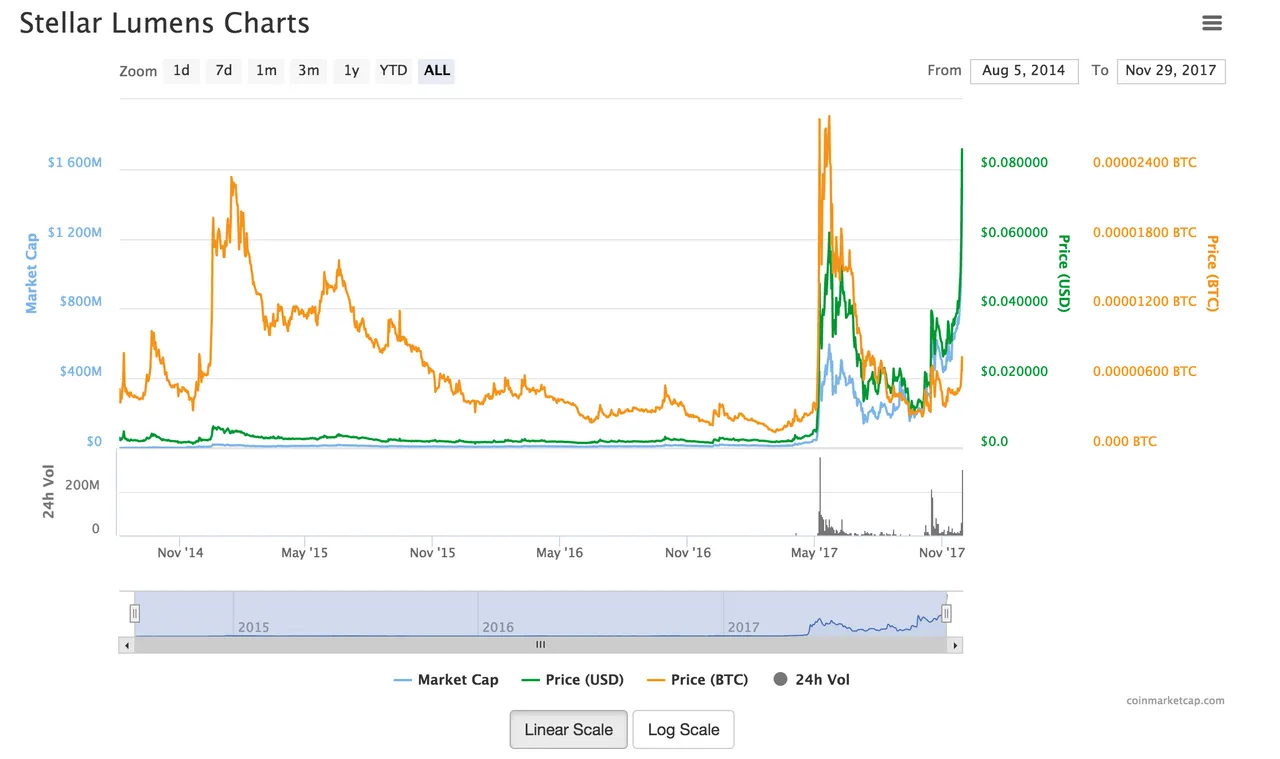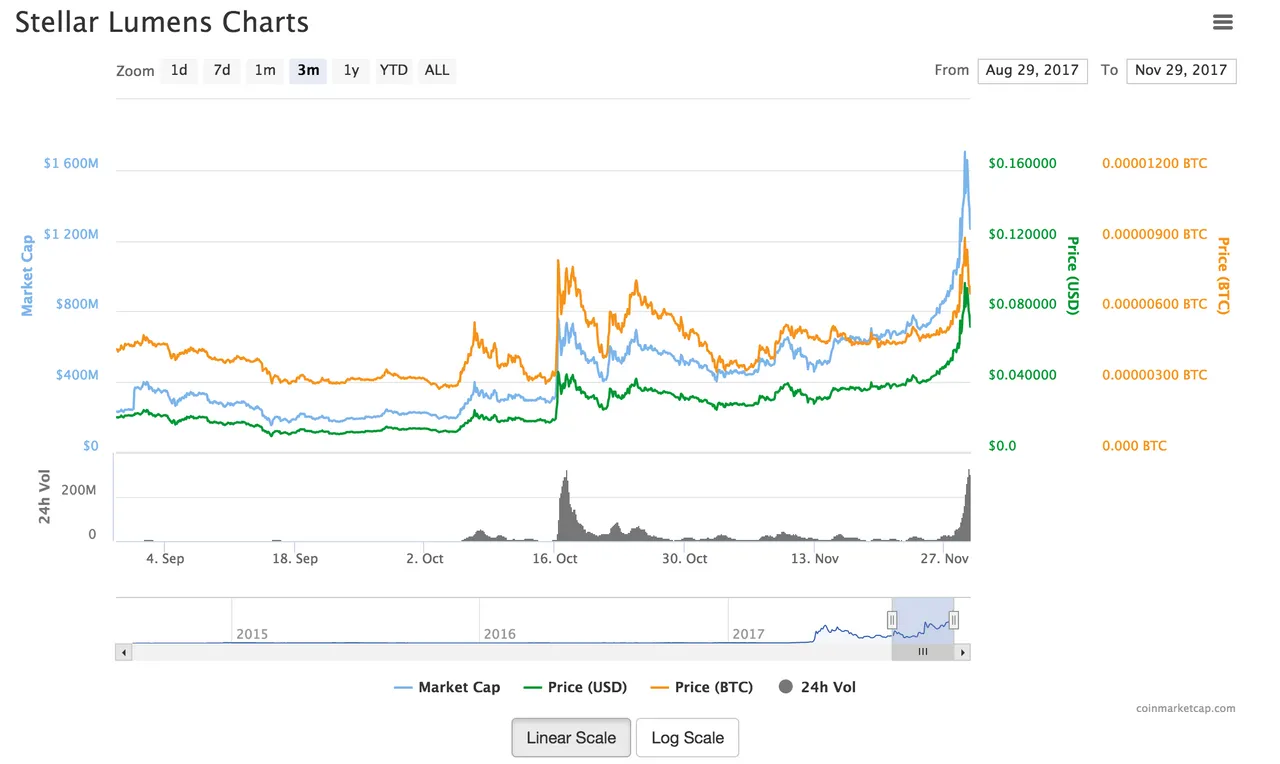Stellar is a non-profit organization attempting to connect all people, poor or rich, within a single easily accessible financial network. The ‘lumens’ token powers this network.

source: stellar.org
If you want to understand Stellar and its lumens token, you need to look at history. This token has received a lot of hype and has made amazing gains in the last few months. Yet, it’s a fairly simple idea. What is driving this market activity for Stellar?
Why does this token currently reside as the 15th most valuable cryptocurrency (as of November 29, 2017)? Why does it have a market cap of nearly $300,000,000? This article will dig deep into the Stellar project to help you understand what is going on with the lumens token.
About This Series + Disclaimer
This post is part of a new series where I investigate each of the top 50 coins by marketcap (based on coinmarketcap.com's rankings on October 11, 2017). My goal is to help steem’s userbase become the most knowledgable blockchain community in the world.
Disclaimer: I am not an investment expert and will not be providing investment advice. I will teach you about the top 50 coins, and you can do what you want with that info.
Stellar’s History and Network
There are two important pieces of information to put lumens in the right context: (1) Timing and (2) Network.
(1) Timing: Stellar’s blockchain was launched in 2014. Back then, the altcoin market was much younger and less mature than it is today. Bitcoin itself was still considered risky and experimental - it didn’t have any of the mainstream hype that it has today.
The idea of building a new and improved blockchain system for digital currencies made sense in 2014. The space wasn’t bloated with too many projects yet, in fact Ethereum did not exist!
Nowadays we’re in a different context. There are hundreds of viable tokens (and many more not-so-viable ones) competing for attention and adoption. The idea of launching a new token merely for improved transactions seems crazy.
Context has changed how the market might see a project like Stellar. Yet it still has a huge valuation. What gives? Enter point #2:
Network: There are a lot of mega tech influencers “advising” Stellar. Of course, the role of “advisor” (I can’t help but keep putting quotes around it) is very vague in the blockchain world and sometimes it’s nothing more than a marketing ploy.
Nonetheless, it says something when you can get approval from half a dozen of silicon valley’s most hyped people. Check out this list, courtesy of Store of Value:

Here’s the deal: When you successfully solicit financial and reputational buy-in from a variety of established individuals in the tech space, they take on some of your risk. After a few years of talking about it, nobody wants to admit that the technology is average. Everybody wants to wait and hope for the best.
After all, the worst case scenario is that you bail on a cryptocurrency just before it moons. This makes it scarier to leave the longer you stay a part of a token’s ecosystem / community.
I like to ask the following question with a blockchain: If you had to buy-in today for the first time, would you? In other words, if you hadn’t committed to the project at all with your time, money, or reputation, would you want to start doing so today?
If the answer is no, that is dangerous.
I suspect that the high value of lumens right now is more driven by loss aversion than by active enthusiasm. The blockchain isn’t doing anything novel in the space - it just offers a reasonably cheap, somewhat scalable financial platform.
Adoption by Major Companies
My opinion notwithstanding, there has been some exciting news in the Stellar Lumens space. IBM announced that they will be using the platform to facilitate cross-border transactions.
This is right in line with Stellar’s mission to facilitate transactions between multiple currencies. It’s nice to see IBM take a vote of confidence in this blockchain.
Of course, you can do cross-border transactions between any two parties using just about any stable blockchain. BTC’s large fees aside, you can transact in so many other cryptocurrencies: LTC, BCash, what have you. I’m not sure how Stellar is unique here.
To me, the IBM deal represents a sales triumph more than anything. Somebody was able to explain blockchain to the powers that be at IBM, and they did so in a way that emphasized the potential of Stellar’s network.
Will other companies follow suit? Maybe. There’s a lot of competition though, and Stellar is still more at the “proof-of-concept” stage than the “company-at-scale” stage.
Token Distribution
Stellar tokens inflate at a rate of 1% per year. Rather than paying miners per block, all inflation and transaction fees are re-allocated to the network based on community votes. In this way, the newly minted currency can do to the people and organizations who will use it to the best benefit of the network.
Here’s how the tokens were initially distributed:

Basically, half of the tokens were airdropped to anybody who wants them - but with a focus on recruiting and onboarding people in economically challenged regions. Those are the sorts of people who may benefit a lot from access to a decentralized digital currency.
The Stellar team only kept 5% of the tokens for themselves - a very conservative take, and in line with the company’s non-profit principles.
The Stellar Team
Stellar’s team page has a lot of great information on some of the core members of the business. Here’s a sampling from that page, this whole section is from there:
Joyce Kim, Co-Founder

Nicolas Barry, CTO

Jed McCaleb, Developer

Ella Qiang, China Partnerships

Market History
All time market history:

Three month market history:

You could say that the market reacted favorably to the October 2017 announcement of an IBM partnership, lol.
I dunno about all this, if you buy now you are probably at super high risk of taking big losses because it’s on the way down from a dramatic bull run for the last month.
Final Thoughts
Stellar Lumens is a great blockchain by 2014 standards. Today though I think it leaves too much to still to be proven.
I want to see them actually do what they are claiming they can do. That means bringing a large number of unbanked individuals onto their blockchain and getting them to transact in lumens. It means creating legitimate currency bridges that let people switch between a variety of digital tokens and fiat currencies.
For now, I feel that Stellar is a good hearted project built on a lot of talk and promises, but not too much has been delivered. Call me a minor skeptic.
What do you think about Stellar Lumens?

